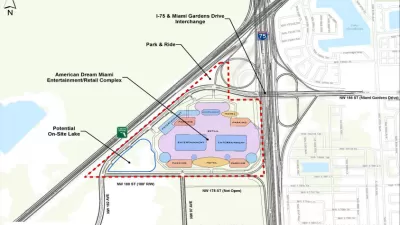Asia's mega-malls have been booming for over a decade, many built atop former park space, and now are suffering from high vacancy rates and low consumer spending.
"In modern economics, a developing country’s middle class is defined by its ability to consume at levels at or near those of the US, Japan, or Europe. Asia’s new malls are bubbles of modernity, built on vast scales as symbols of this growing class. They are meeting spaces, glossy, air-conditioned indoor parks, where you can ignore the air pollution, poverty, and heat of the real world," explains Nithin Coca.
"These malls have been built on what were once parks. As recently as 1983, the city still had 35% of its land in open, green areas. Today, according to Green Map Jakarta, that number has dropped to an astounding 6%, one of the lowest in the world. "
"When Jakartans go for a walk, they have few options beside the malls. Sidewalks are non-existent, overtaken by motorcycles or vendors, the parks are gone, and getting in and out of the city to the countryside a nightmare. As the urban heat effect and lack of trees make Jakarta both hotter and drier, the malls become a refuge of air-conditioning (from reliable, generator-sourced electricity) for a population increasingly more accustomed to living in a climate-controlled world."
Coca describes the macroeconomic takeaway of Asia's faltering mall boom this way: "The reality that malls and consumerism only cater to a small percentage of the population is becoming more and more apparent. Remember—Asia’s economic growth was built on manufacturing and natural resources. It’s the transition to an American-style consumer economy that is faltering, perhaps because that mode—built in an era of cheap oil and plentiful space—is untenable in today’s world."
FULL STORY: Asia’s mega-mall boom is headed toward bust

Planetizen Federal Action Tracker
A weekly monitor of how Trump’s orders and actions are impacting planners and planning in America.

Map: Where Senate Republicans Want to Sell Your Public Lands
For public land advocates, the Senate Republicans’ proposal to sell millions of acres of public land in the West is “the biggest fight of their careers.”

Restaurant Patios Were a Pandemic Win — Why Were They so Hard to Keep?
Social distancing requirements and changes in travel patterns prompted cities to pilot new uses for street and sidewalk space. Then it got complicated.

Platform Pilsner: Vancouver Transit Agency Releases... a Beer?
TransLink will receive a portion of every sale of the four-pack.

Toronto Weighs Cheaper Transit, Parking Hikes for Major Events
Special event rates would take effect during large festivals, sports games and concerts to ‘discourage driving, manage congestion and free up space for transit.”

Berlin to Consider Car-Free Zone Larger Than Manhattan
The area bound by the 22-mile Ringbahn would still allow 12 uses of a private automobile per year per person, and several other exemptions.
Urban Design for Planners 1: Software Tools
This six-course series explores essential urban design concepts using open source software and equips planners with the tools they need to participate fully in the urban design process.
Planning for Universal Design
Learn the tools for implementing Universal Design in planning regulations.
Heyer Gruel & Associates PA
JM Goldson LLC
Custer County Colorado
City of Camden Redevelopment Agency
City of Astoria
Transportation Research & Education Center (TREC) at Portland State University
Camden Redevelopment Agency
City of Claremont
Municipality of Princeton (NJ)



























